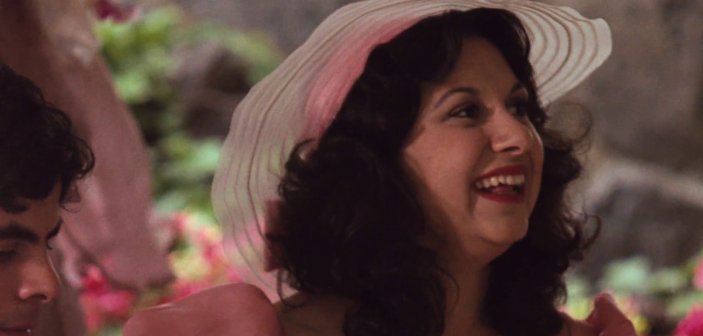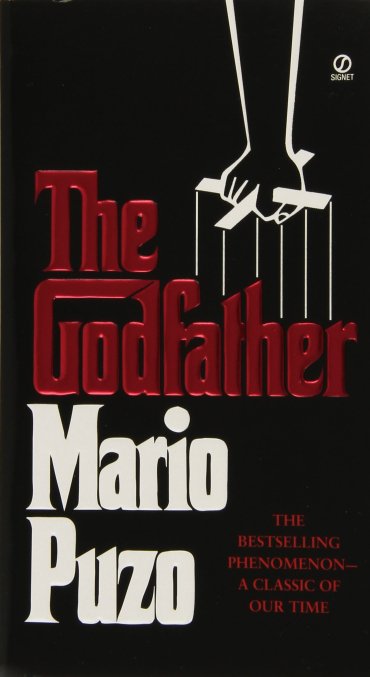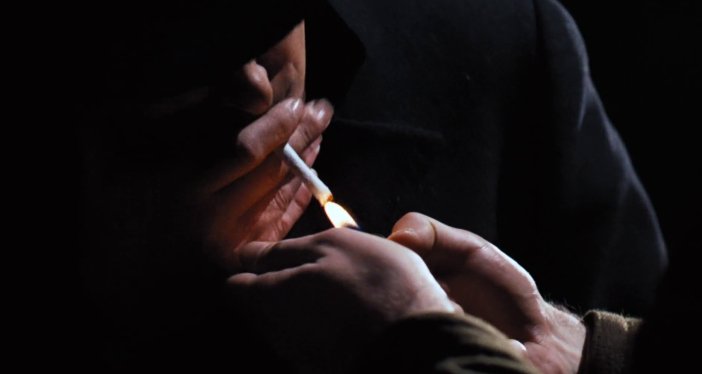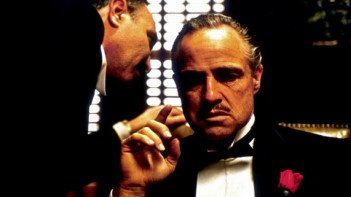Literature on Film | Part 6 | The Godfather is Full of Shit
The Godfather is full of shit. And piss. And semen, lots and lots of snot, bits of brain and skull, and, of course, plenty of blood. In the original Godfather novel, Mario Puzo has a strange need to follow nearly every moment of high drama with a character ejecting something from their body. Michael Corleone will often deliver speeches of shockingly callous intelligence, only for his sinus problems to make him dribble snot everywhere. Or take the death of Luca Brasi, the one-man-army working for Don Corleone –
Suddenly the floor was wet and slippery. Luca’s sphincter, no longer under control, opened, the waste of his body spilled out’. p141, The Godfather, Puzo
Believe me, he is not alone in losing control of his sphincter. Reading The Godfather is like having your favourite movie described back to you by an inarticulate uncle who just loves talking about poo. It’s uncannily exactly the same story and yet tonally completely different – where Francis Ford Coppola’s film is grand and classical, Puzo’s novel is unapologetically pulpy trash. I used to think it was a miracle that such a poor book ended up being made into such a great movie. Lately though, I re-read it, and it was clear that this adaptation works so well precisely because it brings together two different creative temperaments – a plot-strong novelist and a director with a great talent for style and mood.

In case you’re unfamiliar with the plot, The Godfather follows the Corleones, a New York Mafia family led by Don Vito Corleone, a gangster who is looked on as close to godly by the many people who owe him favours. When a rival family guns him down, the Corleones are propelled into a period of chaos and bloodshed, and the most unlikely son steps up to protect the family. Anyone who has read the book will know that there is one big gaping hole in the film adaptation and that is, well, a big gaping hole. Lucy Mancini, seen for all of ten seconds in Coppola’s film as a bridesmaid, occupies over 50 pages in Puzo’s book as she struggles to deal with the problems of having a giant vagina. We’re told at length about the friction (or lack thereof) this causes in her relationships and given a graphically detailed description of the surgery that finally solves this. Along with a subplot about Hollywood singer Johnny Fontaine and his vocal cord warts, this never has an impact on the main plot, and feels more like an excuse for Puzo to indulge in some more lengthy biological descriptions.

Coppola guts the 600 page book of these extraneous subplots and allows the central spine of the story to breathe. I might not be a fan of his style (his favourite adjective is ‘lovely’), but Puzo is a brilliant nuts-and-bolts plotter, and Coppola stays extremely faithful to his central plot. There’s only one new scene in the film. Every other scene lifts the setting, dialogue and actions directly from Puzo’s book, paring them down to their essential beats. The result is that the story of Michael Corleone – a man who resists joining his family’s business only to be pulled into a life of violence – becomes so much more potent and chilling once its been pruned of all those pointless tangents.
I remember a scriptwriter once telling me that when you cut something big from a script, the scent of it still stays there on the page. In The Godfather the scent of all the omitted tangents and backstories still lingers throughout the film. It’s full of allusions to characters we’ll never meet, old Sicilian traditions, conversations in Italian with no subtitles, and mob-speak that isn’t explained like ‘take to the mattresses’, ‘fanouk’, or ‘omerta’. Sometimes we’ll see a telling detail from the book in the background – a bunch of gangsters drawing up a kill list, or a burnt-out car from an attempted hit. Yet none of this is confusing, or hurts the film. We just accept that it’s part of the characters world that we don’t have access to, and this makes the world of the film feel lived-in, rich in detail, and authentic.
Stop anyone on the street and they can tell you the style of The Godfather, even if they’ve never seen it – an old guy holding a cat amid dark shadows, an aura of romance, autumnal colours. Coppola took the iconography of 30’s Hollywood gangster films and combined it with a new subdued tone, reminiscent of Bertolucci’s Il Conformista, to create what has become a defining image of the Gangster. For his stunning low-light cinematography Gordon Willis earned the nickname ‘The Prince of Darkness’ and his painterly work imbues the Corleones with a regal elegance amid their murky underworld. The direction moves swiftly from graceful and patient to operatic and grand, leading to a film that feels close and personal one moment, epic and theatrical the next. And where Puzo trumps a death scene with a graphic detail, Coppola prefers to simply let the camera linger on the stillness of death.

There’s one moment of directing I absolutely love. It’s the scene where Michael and Enzo the Baker stand guard outside a hospital, knowing that hitmen are on their way. A car approaches and so they pretend to reach for guns in their pockets. The car drives off. Michael brings his lighter up to Enzo’s hands. They shake with nerves. Then Michael looks at his own hands – perfectly still. It’s a simple image plucked from Puzo’s novel, but on screen it gains a whole new power. Michael sees his destiny in his still hands, in his blood. ‘Oh, that’s who I am’ his look says. We see, for the first time, that Michael is damned.
This huge split in style between the two Godfathers got me thinking about adaptations generally. What makes The Godfather great source material for a film? I’d say it’s the well crafted central plot, and that the characters externalise their emotions through actions and dialogue. But books with these qualities are often considered ‘low’ and rarely celebrated as Literary with a capital ‘L’. Culturally, we don’t posit artistic merit on strong plotting in books like we do in cinema. We call books like that ‘paperback thrillers’ ‘pageturners’ and ‘airport books’. Many of the most highly acclaimed films have been adapted from pageturner authors: Stephen King, Elmore Leonard, Raymond Chandler, Dashiell Hammett, Ian Fleming. The highest acclaim in literature is usually reserved for writers dealing with the internal thoughts and feelings of the characters, but these books often make for the worst film adaptations. Brought to the screen they can be terribly meandering, turgid films, the kind where you end up yelling ‘oh for gods sake why doesn’t she just tell him she loves him’ at the screen as you watch two people stand apart in an opulent sitting room not talking about their emotions.

This difference in reception is particularly noticeable when we look at the gangster movie, possibly the most stylish genre in mainstream cinema. Since its glory days in the 30’s, it’s got a long history of being picked up and re-imagined by some of cinemas most respected directors – Scorsese, De Palma, Godard, Truffaut, Cassavetes, Tarantino – who all used it as a springboard to try out new visual and narrative ideas. But while in cinema it’s one of the oldest and most respected genres, in literature it’s one of the newest and least respected. And maybe this is another reason why Coppola and Puzo’s two Godfathers feel so different. They’re each drawing on a separate stylistic tradition – Puzo on the literary tradition which is pulpy and gritty, from a foundation in sensationalist journalism, and Coppola on a cinematic tradition that’s grand, cool and elegant, a patchwork of international influences.
If it was adapted today, I have a feeling The Godfather would be made into an HBO miniseries, and every part of the book would be brought to the screen and mined for drama. It would be a ten episode saga using the characters to explore the world of New York crime, post-war Sicily, Hollywood scandals, and the first days of Las Vegas. A miniseries has a license to ramble and explore interesting tangents as much as a lengthy novel does. In contrast a film can be like a poem, song, or short story – it has one core and it has to stay true to it, to convey that singular experience and impression to the viewer. Coppola’s work in adapting – that process of selecting the one most important story to tell and then either condensing the leftover details to world-build or discarding them completely – those choices are what elevate The Godfather past its source material.

